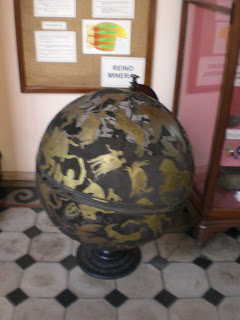
Uruguay has placed a very large focus on developing math and the sciences. Andre and I were aghast when we saw all the virtually ancient and wonderfully preserved artifacts that they have maintained in the museum.





Other honorable science mentions go to:
Biology




Astronomy

Geography

(Note: I just want to point out how awesomely they've chosen to define an Island )
Anatomy

Being that literature is extremely important to South American culture, and having produced brilliant and famous writers such as Eduardo Galeano and Horacio Quiroga, Uruguay places a heavy focus on its writing programs. Calligraphy and creative writing are encouraged from a very young age.



Also, they believe that an environment that stimulates the body and mind will more likely enhance the learning experience. Even though I know this is a museum and realize other schools don't look anything like the following picture, I must say that if my school or classroom had ever looked anything like what they seem to hope for, I would have been delighted to attend my classes every day.

Perhaps my favorite part of the museum is the area dedicated to depicting the different methods to discipline the unruly children. They seem to prefer embarrassing the child by making them stand outside the classroom while wearing a donkey hat, a big red "tongue", or sometimes even a sign that has the word "Shameless" emblazoned on it. Other times, a good beating will just as easily do the trick.






"A beating is worth more than a sermon".





























